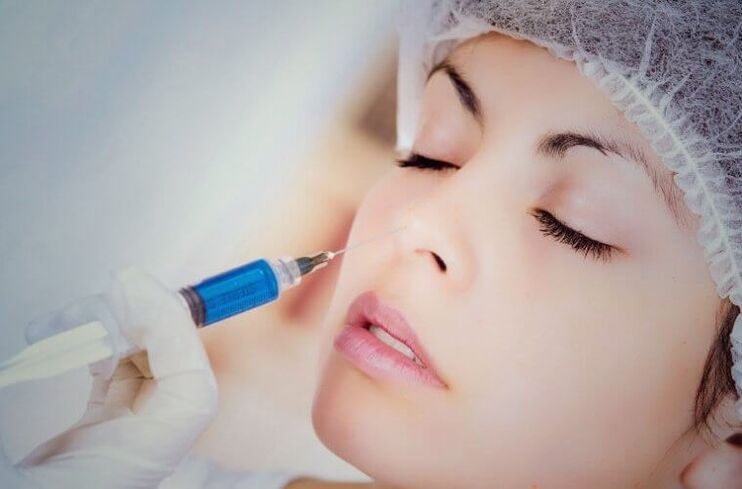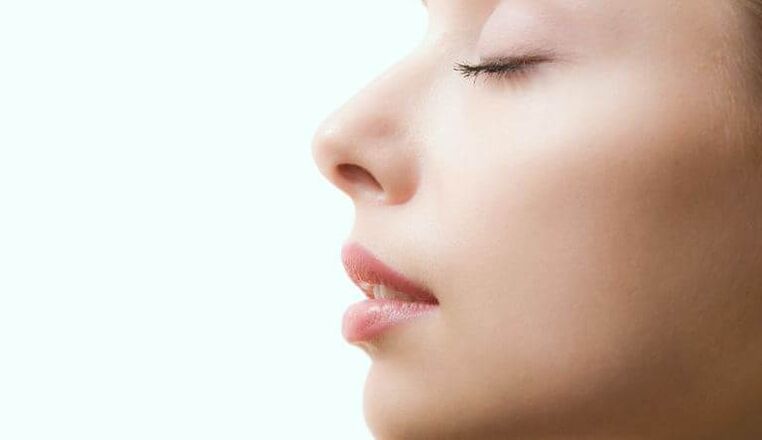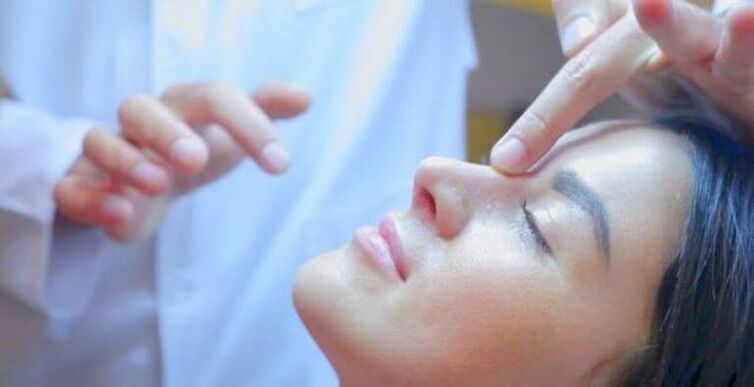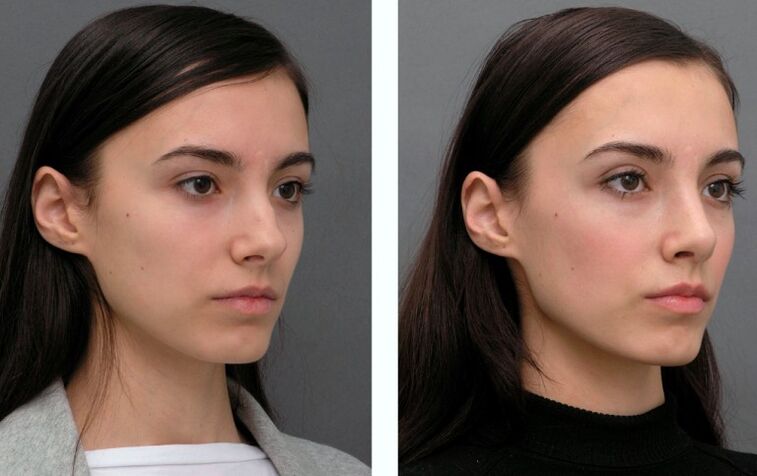Non-surgical rhinoplasty is a relatively new term in medicine, and few people know what it is.If many people have already heard about classic surgical procedures, then in this case some questions arise.If you have a complex due to a defect in your olfactory organ and an ugly nose tip, hump or depression has affected your life, then you should definitely know what non-surgical rhinoplasty is.

Non-surgical rhinoplasty and its secrets
Non-surgical rhinoplasty is a way to correct the shape of your nose without surgery.The essence of this method is to introduce special fillers or lines into the area, slightly correcting the shape and giving symmetry to this part of the face.Ideal for patients without breathing problems, deviated septum or nasal bones.If there are minor imperfections in the shape of your nose, fillers are the ideal solution as they will help correct these problems.It should also be noted that the term "non-surgical rhinoplasty" is somewhat incorrect and contradictory."Rhinoplasty" is a surgical procedure on the nose, and using the definition of "non-surgical" in this context is not entirely logical.
But experts agree that this corrective procedure is accurately called a "filler" in order to convey the essence of the method to patients who know little about correcting the shape of their nose.This procedure should not be considered a complete alternative to surgery.It is designed to combat certain defects that cannot be eliminated through surgery.On the contrary, it does not solve problems that are eliminated by surgery.Typically, this technique is performed when a patient is dissatisfied with the results of rhinoplasty surgery and needs adjustments to the final nose shape.Before agreeing to surgery, we recommend that you study before and after photos to get an idea of the possible results.The nose cannot be reduced without surgery.By the way, nasal cartilage increases with age, so some patients may report that their noses become larger as they age.

5 Distinctive Differences of Non-Surgical Rhinoplasty
This procedure differs from surgery in many ways, including:
- No need for complicated surgeries or long and painful recovery periods;
- the speed of the program;
- reasonable costs;
- Short-term effects (last up to a year);
- Respiratory and other serious problems cannot be corrected.
In other words, it is an almost simple procedure that guarantees gentle results aimed at solving minor problems with nose shape.For example, it can be used to improve the tip of the nose, eliminate some imperfections, or even eliminate relief.This technique can be performed whenever the results become less noticeable.The main condition is patient satisfaction with the results obtained.If the client has had filler in their nose in the past, I use hyaluronidase to dissolve the remaining filler in the nose before giving further injections.Essentially, we are starting over.Otherwise, there will be fillers in different stages of dissolution in the nose, which will lead to an uneven nose over time.
Non-Surgical Rhinoplasty Results
Non-surgical rhinoplasty allows you to:
- obtain symmetry of shapes;
- Eliminates small blemishes in the form of subcutaneous dimples or nodules;
- Minor curvature correction;
- Raise the tip of the nose;
- Adds subtlety to the nose.
As you can see from this list, non-surgical rhinoplasty is more of a corrective rhinoplasty than one that corrects a serious problem.Before signing up for this technique, patients should consult their doctor to receive advice and get an overview of the results to avoid disappointment with the procedure.You should not expect non-surgical rhinoplasty to completely change the shape of your nose and resolve respiratory function issues.This technology is not designed to solve these problems.

What method is used to perform this process?
What are the methods and how is the procedure completed?Traditionally, non-surgical rhinoplasty can be divided into the following categories:
- Fillers.This technique involves the introduction of hyaluronic acid-based fillers.They can fill in small irregularities, even out the skin surface and make the nose symmetrical.Preparations based on hyaluronic acid and other substances are often used here.These products are often classified as biodegradable, meaning they dissolve over time.There are also permanent fillers based on silicone or other biopolymers, but modern experts advise against their use because they can lead to tissue fibrosis.
- thread.Aptos threads have been used for face lifts for about 20 years; not only do they allow you to tighten and correct the contours of your cheekbones and facial contours, they can also change the shape of your nose.This is the best option for those who want to lift the tip of their nose or smooth out small wrinkles on the bridge of their nose, visually improving its contours.Threads can also be biodegradable or permanent.
- Hormone drugs.They are also injected under the skin.They allow you to eliminate small imperfections and make your nose visually slimmer.These medications are not intended to correct bone tissue.They eliminate defects.It is important to follow the exact dosage.
- Splint.The name refers to a device made of plastic or plaster.Its purpose is to correct the contours of the olfactory organ.The device applies pressure to the cartilage tissue, correcting the defect.With its help, you can raise the nose, narrow the wings, and smooth the arc.But you need to understand that this approach will not lead to huge changes, but only smaller corrections.

The method of non-surgical rhinoplasty is chosen based on individual circumstances.In each case, the beautician must consult the patient and explain why the chosen method should be used.
Indications and Contraindications
If there are certain deficiencies, the procedure should be carried out.
Indications:
- drooping nose tip;
- Minor violations observed;
- There is asymmetry;
- Flat upper nose bridge;
- The skin in the area is sagging.
Facial fillers can be used to improve the symmetry of the nose.But to reduce the size of the nostrils or overall shape, surgery is necessary.
Dermatologist Jason Emer
This surgery is contraindicated in certain circumstances.
Contraindications:
- during pregnancy and breastfeeding;
- acute inflammatory process;
- infectious disease;
- acute phase herpes;
- diabetes;
- Hypersensitivity to active substances and medications.

The surgery can be performed in adulthood and then at any age.
recovery period
There is no such recovery period.Redness and swelling of the skin in the nose area may be observed for a few hours after surgery, but these problems will disappear completely within 24 hours.When having a thread lift, bruising may form and disappear completely within a week.In addition, a special splint is placed on the patient's nose to ensure results and prevent injury.The filler may fall out after the injection and the thread inserted under the skin of the nose may break.The likelihood of these side effects occurring is extremely low, however, if any are detected, a specialist needs to be contacted urgently to resolve the issue quickly.
Bruising and swelling may occur after surgery.It will take about two weeks for them to completely disappear.If you still have these symptoms after this period, you should see your doctor.
Esthetician and Dermatologist Paul Flashner
Benefits of Non-Surgical Rhinoplasty Surgery
What are the advantages and disadvantages of this type of nose correction?The main advantages of this technology include:
- painless;
- A short or no recovery period;
- Get results quickly;
- Reversibility.
Questions may arise regarding reversibility, since if the process needs to be repeated again with a stable frequency, can this be considered an advantage?In a sense, yes, because it is simply impossible to return the previous results with classic rhinoplasty; you may experience unsuccessful results.What if you find that your patient is unhappy with the new nose shape?Corrective plastic surgery can help correct the condition to some extent, but it is impossible to completely reverse the results.And non-surgical rhinoplasty allows you to return to your previous shape at any time without any changes.The duration of results depends on the filler used (hyaluronic acid preparation).Repeat surgery is usually required after 9-12 months.
Expert opinion

I can't say this process is completely safe.In my practice, I often have patients who develop severe ischemia of the skin following similar procedures.If the filler is introduced incorrectly, it may cause cartilage deformation; this is a direct indication for subsequent corrective surgery.Therefore, you should choose your expert carefully.Based on the above information, you can easily conclude that non-surgical rhinoplasty is not suitable for everyone.This process makes sense if we are talking about small defects that can be eliminated with slight adjustments in filling and shape.In other cases, when it comes to correcting serious defects, such as a deviated septum or curvature of the bones, classic surgery is required and a painful but complete method is used to eliminate the problem.If minor imperfections are present, non-surgical rhinoplasty can correct the condition and bring symmetry to the face.But it's worth remembering the risk of side effects.




















